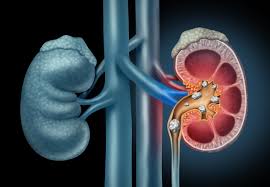AP Macroeconomics: In this course, we’ll explore the principles of economics that apply to entire economic systems. From graphs to data analysis, we’ll delve into economic concepts that shape our world. Let’s dive in:
Course Overview
AP Macroeconomics is an introductory college-level course that examines the big picture of economics. We’ll analyze, describe, and explain economic phenomena using models and visual representations.
Skills Development
In AP Macroeconomics, you’ll develop essential skills, including:
- Modeling: Understanding economic principles and models.
- Explanation: Describing economic outcomes.
- Analysis: Determining outcomes in specific economic situations.
- Graphical Representation: Using graphs to model economic scenarios.
Equivalency and Prerequisites
- College Course Equivalent: Comparable to a one-semester introductory college course in macroeconomics.
- Recommended Prerequisites: None—this course welcomes all curious minds interested in understanding economic systems.
Exam Information
- Exam Date: Friday, May 10, 2024, at 12 PM Local Time.
- This is the scheduled date for the AP Macroeconomics Exam.
Course Units
The AP Macroeconomics curriculum is organized into six units:
Unit 1: Basic Economic Concepts
- Focus: Introduction to economic concepts, principles, and models.
- Exam Weight: 5%–10%.
Unit 2: Economic Indicators and the Business Cycle
- Focus: Measurement of economic phenomena (GDP, unemployment, inflation) and understanding business cycles.
- Exam Weight: 12%–17%.
Unit 3: National Income and Price Determination
- Focus: Aggregate spending, production, equilibrium, and policy effects on national income, unemployment, and inflation.
- Exam Weight: 17%–27%.
Unit 4: Financial Sector
- Focus: Monetary policy, financial assets, money supply, and banking.
- Exam Weight: 18%–23%.
Unit 5: Long-Run Consequences of Stabilization Policies
- Focus: Effects of fiscal and monetary policies, economic growth, and stability.
- Exam Weight: 20%–30%.
Unit 6: Open Economy—International Trade and Finance
- Focus: Interactions with the global economy, exchange rates, and capital flows.
- Exam Weight: 10%–13%.
Preparing for Economic Exploration
Get ready to analyze economic systems, understand policy implications, and unravel the complexities of macroeconomics. Let’s make sense of the world’s economic puzzle!
What are some study tips for AP Macroeconomics?
Studying for AP Macroeconomics can be challenging, but with effective strategies, you can succeed. Here are some study tips to help you prepare:
Understand the Exam Format:
- The AP Macroeconomics exam consists of two sections: multiple-choice questions (MCQs) and free-response questions (FRQs). Be aware of the time constraints and scoring weight for each section.
- MCQs: 60 questions in 70 minutes (66% of the score).
- FRQs: 3 questions in 60 minutes (33% of the score).
Time Management:
- For MCQs, aim to answer one question per every 1 minute and 20 seconds.
- For FRQs, spend approximately 20 minutes on each prompt. Adjust based on complexity.
Review Key Concepts:
- Understand economic principles, models, and outcomes. Make assertions and explain concepts effectively.
- Use economics content knowledge and reasoning across various topics.
Watch Review Videos:
- Include macroeconomic review videos in your daily study routine. Visual explanations can enhance understanding.
Invest in a Review Book:
- Get an AP Macro review book and incorporate it into your study routine. Work through practice questions and explanations.
Master Graphs:
- Review and understand important graphs related to supply and demand, aggregate demand, and aggregate supply.
Practice Numerical Analysis:
- Work with numerical data, calculate GDP, and understand real vs. nominal values.
Analyze Mistakes:
- After taking practice tests, analyze your mistakes. Understand why you missed certain questions and learn from them.
Use Official Practice Tests:
- Take official full-length practice tests to gauge your progress. Focus on official resources before using unofficial ones.
Remember, consistent practice, understanding concepts, and effective time management will help you excel in AP Macroeconomics. Good luck!











